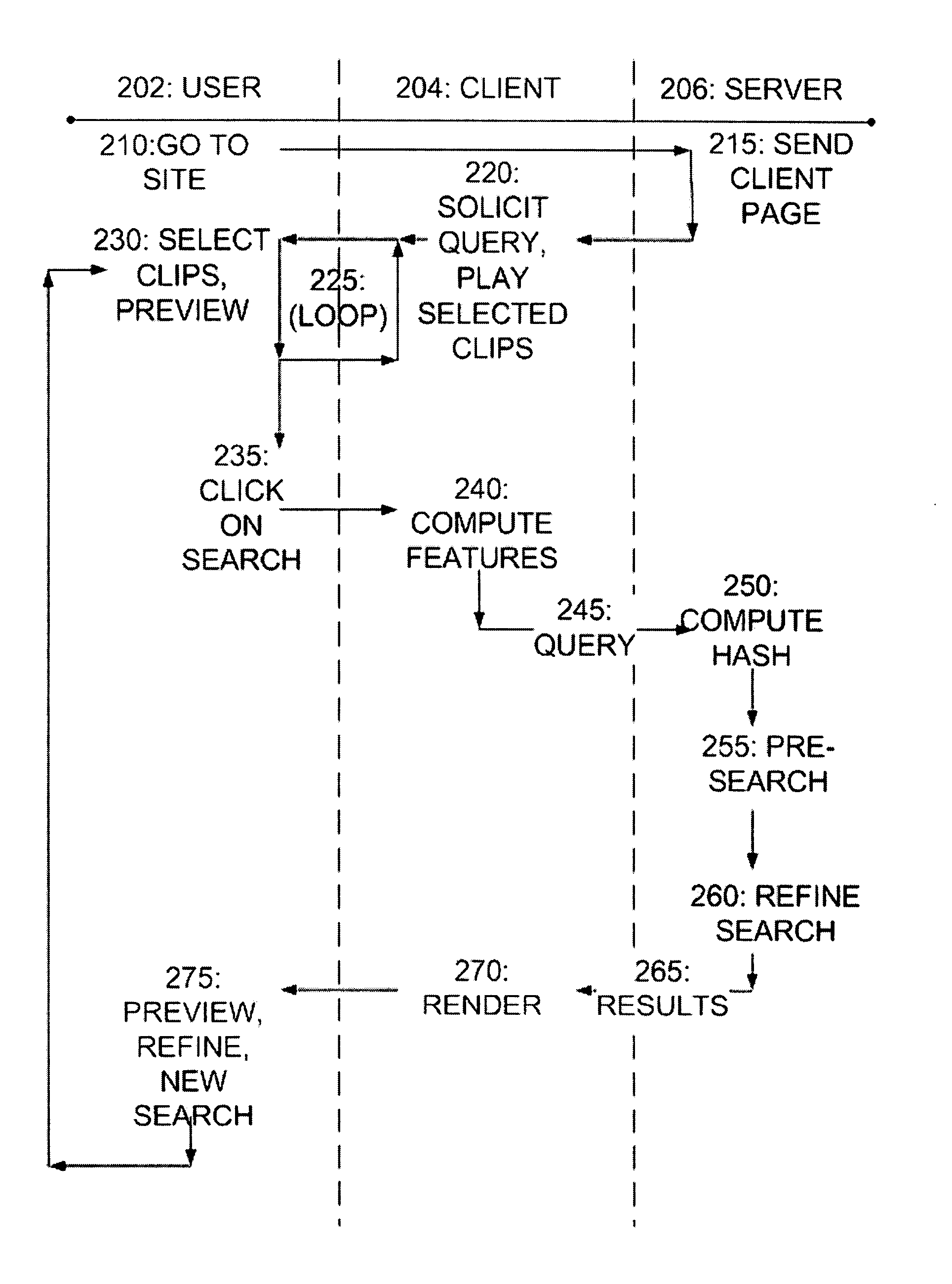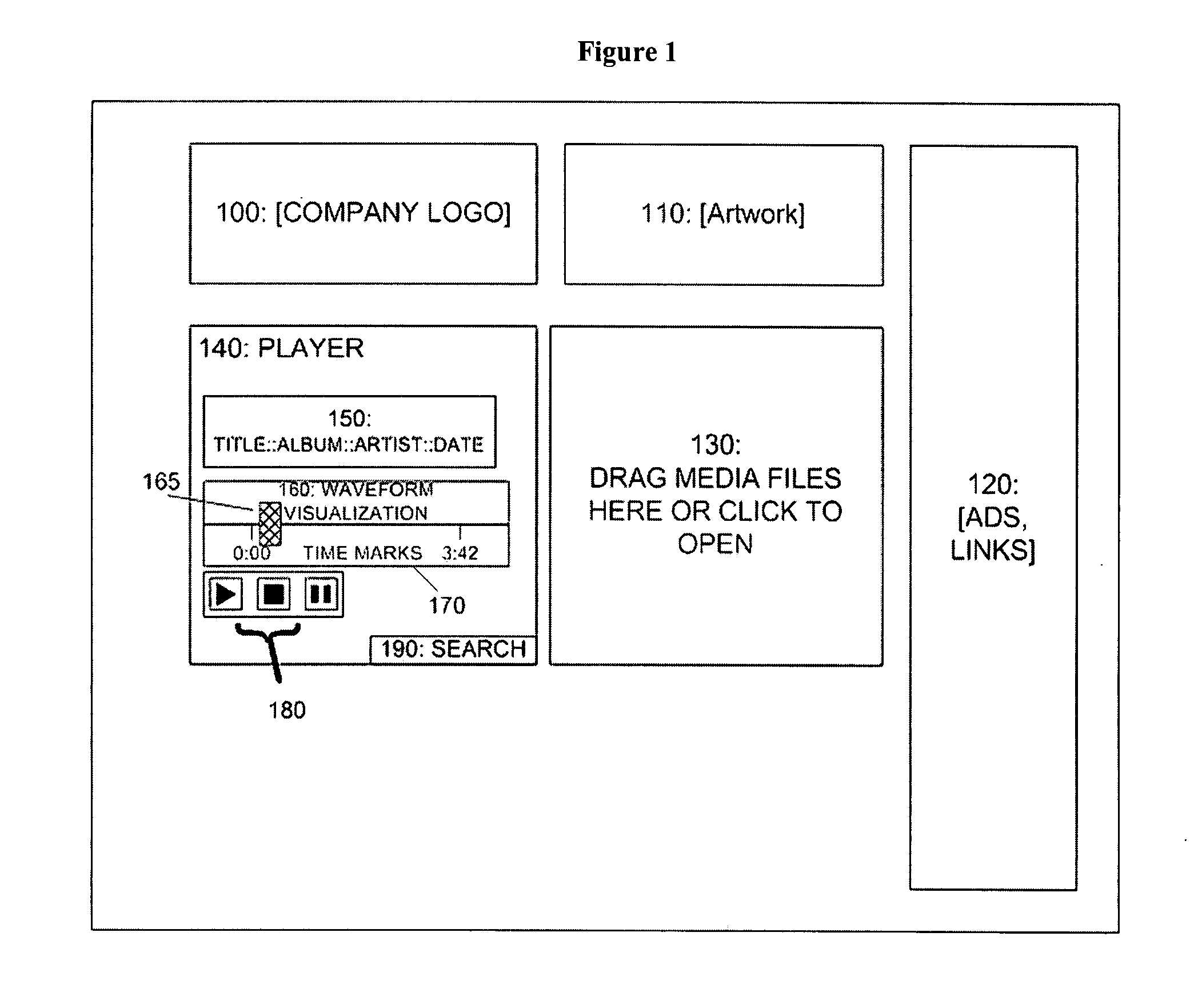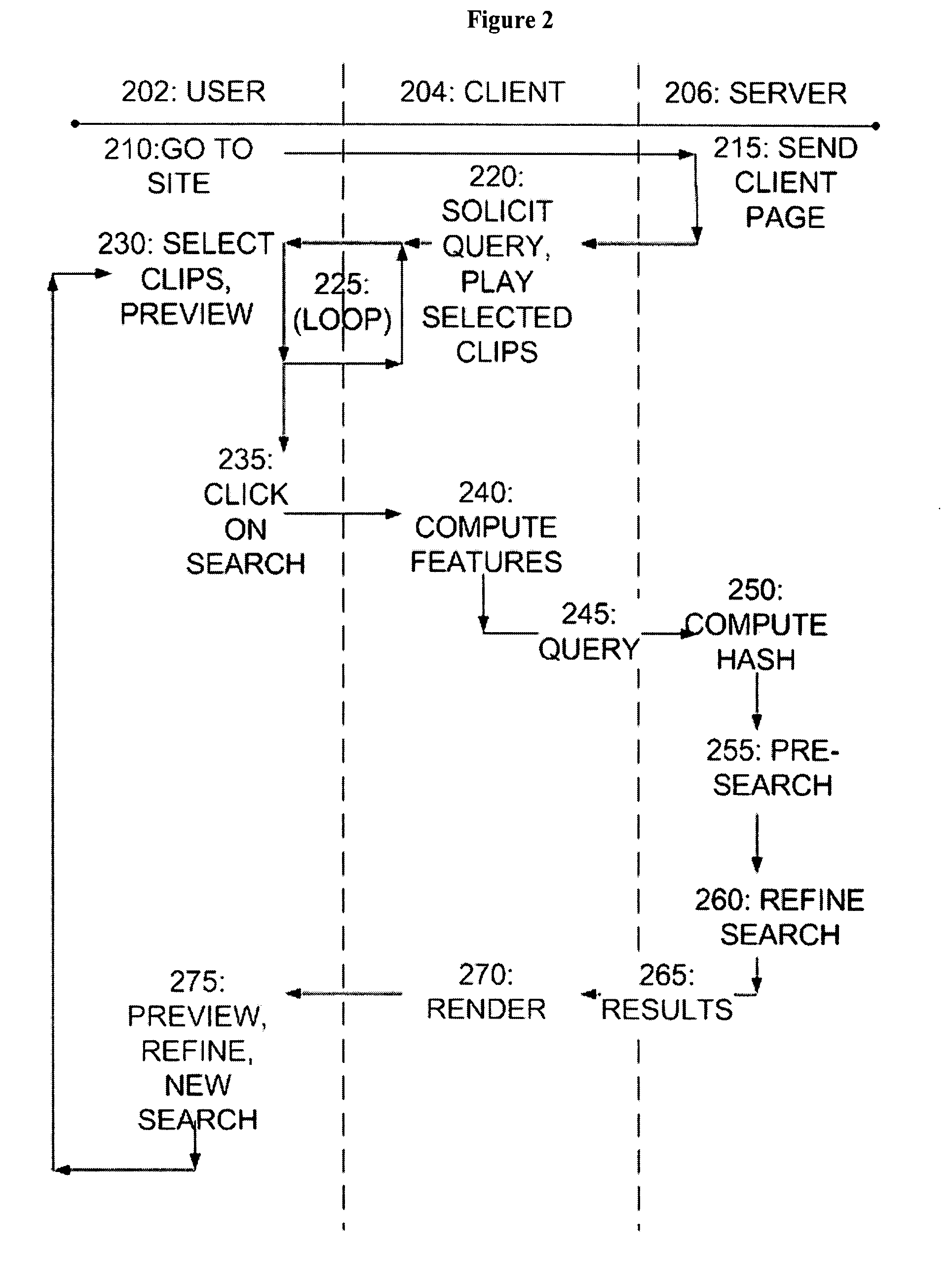Method and system for music information retrieval
a music information and retrieval technology, applied in the field of methods and systems, can solve the problems of insufficient characterization of metadata, inability of any one person to be familiar with all of the choices, and inability to fully characterize metadata, so as to reduce the amount of time and the number of searches, and increase the relevancy of results returned.
- Summary
- Abstract
- Description
- Claims
- Application Information
AI Technical Summary
Benefits of technology
Problems solved by technology
Method used
Image
Examples
Embodiment Construction
[0038] Turning now to the drawing figures and particularly FIG. 1, an embodiment of the present invention comprises a web page with typical graphical elements such as a company logo (100), other decorative artwork (110), a section of the page for advertisements or other affiliated revenue links (120), and elements in support of the music query comprising a query file select sub-window (130), and a query file player (140) comprising title, artist, album, track information (150), audio waveform plot (160) with selected clip window (165), time marks (170), player controls such as start, pause and stop (180), and a search button (190).
[0039] Use of the webpage comprises viewing the page, selecting one or more files from the user's computer, requesting a query and examining the results. Selecting a music file comprises selecting a music file by operation in which a music file from the user's computer is dragged and dropped on the file select sub-window (130). Alternatively, or in additi...
PUM
 Login to View More
Login to View More Abstract
Description
Claims
Application Information
 Login to View More
Login to View More - R&D
- Intellectual Property
- Life Sciences
- Materials
- Tech Scout
- Unparalleled Data Quality
- Higher Quality Content
- 60% Fewer Hallucinations
Browse by: Latest US Patents, China's latest patents, Technical Efficacy Thesaurus, Application Domain, Technology Topic, Popular Technical Reports.
© 2025 PatSnap. All rights reserved.Legal|Privacy policy|Modern Slavery Act Transparency Statement|Sitemap|About US| Contact US: help@patsnap.com



